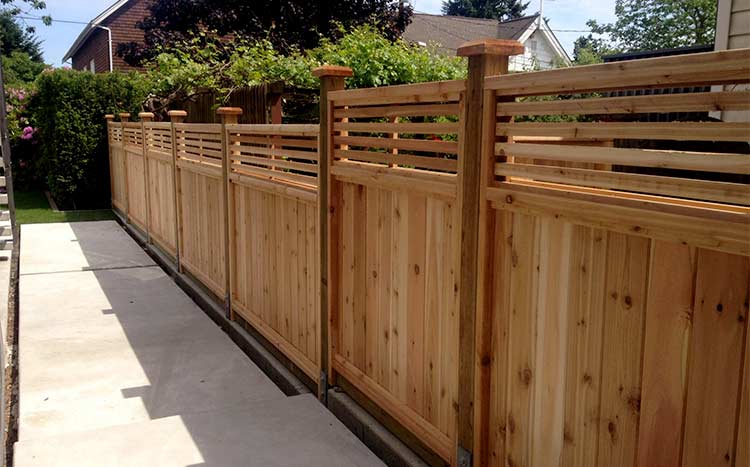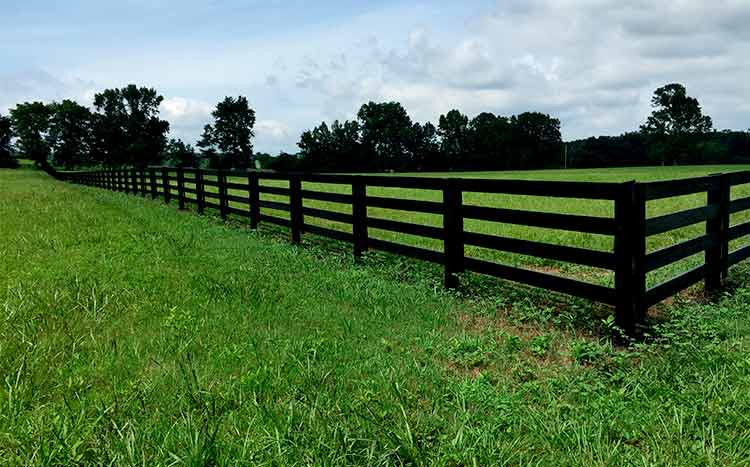Property line fence disputes among neighbors aren’t a new thing in Colorado. Whether you’re living in an urban or rural area, fence conflicts are bound to occur at some point.
When it happens, resolving the matter by negotiation and mediation is usually the best way to handle it. But if you can’t seem to agree, the Colorado Fence Laws stipulated in the Colorado Revised Statutes should be your next stop.
Do I need a permit to build a fence in Colorado?
It depends on the height of the fence you want to build. In most cases, you won’t need a permit to build the fence.
But if it’s taller than six feet, it’ll be treated as an accessory construction that requires planning, an engineering drawing, approval, and licensing from the Land Use and Development code department.
Keep in mind; Most building permits remain valid for 180 days (6 months) from the issue date. If you don’t begin your fence construction within this time, the permit becomes void, and you’ll have to apply for a new one.

What is a partition fence?
A partition fence is basically a fence erected on the property line of two properties to be used by the adjoining neighbors. It’s also called a boundary or division fence.
However, different states have different definitions of the responsibility and use of the partition fence.
The Colorado Fence Laws Statute 35-46-101 defines a ‘lawful fence’ as any well-constructed three-barbed wire fence with enough well-spaced posts (around 20 feet).
Who owns the fence on the property line?
Prior to any mutual agreements, the State of Colorado recognizes that a boundary fence on the property line belongs to both owners.
As such, each of you is responsible for the maintenance and repairs required for the fence. For the same reason, neither owner can remove the fence without the consent of the other.
However, you can formulate a set of new rules with your neighbor if you want. For instance, you can opt to handle the regular repairs if you own a dog or other pets on the compound and so have more need for the fence.
These agreements will hold for the while that you’re both neighbors. Once a new neighbor moves in, the agreement becomes null, and you’ll have to make a new one.
Can my neighbor build a fence on the property line?
Yes, but they’ll first have to consult you. Colorado fence laws specify that each neighbor must build one-half of that fence when erecting a fence on the property line. You’re also required to split the costs for the maintenance and repairs of the fence.
If you don’t fancy this new structure and don’t think you need it, sign a written contract showing that your neighbor is the sole owner of the fence.
The fence will only be an issue if it encroaches on your property. In such a case, you’ll have grounds to stop them from building the fence.
How high can I build a fence?
Colorado Fence Laws allow the maximum height of fences to be around 6-feet in the residential areas. However, this height limit can be extended to 8 feet, depending on the grade changes between your properties.
The law also allows an extra 12 inches for the fence posts that are spaced 8-feet apart. The front yard and corner lots of your fence are limited to a maximum height of 4 feet.
Can I put up a fence on my property?
Yes! The general rule is that you can do whatever you want on your side of the property line just as long as it doesn’t encroach on your neighbor’s side of the property line.
Once the fence lies too close to the property line, you may have to seek permission from your neighbor to erect the fence.
The neighbor can, however, stop you from putting the fence if they have reason to believe that you’re erecting a spite fence.

What happens if my neighbor refuses to pay for a fence?
If your neighbor doesn’t want to pay half of the total costs for the fence, your first step should be writing them a letter. Explain to them the damages or maintenance costs required, then ask them to honor their agreement.
If that fails, go to mediation and involve a third party in the meeting with the neighbor. As a last resort, give the other neighbor 30 days’ written notice, pay for the fence repairs, then sue the neighbor in court to get your reimbursement.
This is clearly stated in the Colorado Revised Statutes section 35-46-112, ‘the person giving notice may proceed to erect or repair the entire partition fence and collect by a civil action at law one-half the entire cost thereof from the other owner.’
How close to the property line can I build a fence?
How close you can build your fence to a property line will depend on your state fence laws and regulations. Most states will set their jurisdictions on either 2, 4, 6, or 8 feet from the property lines.
If you live in an urban area, the fence can be as close as a few inches from the property line. However, you will also have to confirm with your Homeowner’s Association regarding the fence placements.
If you choose to build your fence a few feet from the property line, you’ll still be responsible for maintaining that section outside the fence which is still part of your property.

What is a spite fence?
A spite fence refers to an unusually tall or ugly fence constructed to annoy a neighbor. Most states in the country have laws that protect their residents and neighborhoods against such a structure.
There are no laws in Colorado Fence laws against spite fences, but you can use other laws to force your neighbor to remove the structure.
For instance, if the fence exceeds the maximum height limits, you can sue them under this ground to have them remove the fence.
Colorado boundary fence laws at a glance
This table provides an overview of some of the state laws governing the fence laws in Colorado and links to their original documents.
| Statues | Partition fences | Max heights |
|---|---|---|
| Partition Fences: 35-46-112 Partition Fences; Cost of Repairs: 35-46-113 | Unless agreed otherwise, owners of each property are responsible for building one-half of the partition fence. Owner of each property should offer a 30-day written notice to repair or replace a fence. Both owners are liable to share costs in maintaining, repairing, and replacing the partition fence. | Residential partition fences must not be taller than 6 feet tall. An additional extension may be allowed up to 8 feet tall due to grade differences. Front yard and corner lot fences should not exceed 4 feet tall. |
Note: These State laws are subject to changes over time through new legislation and court rulings, among other means. Therefore, always do your own research to find the up-to-date regulations.
FAQ’s
Does a fence determine property lines?
Not necessarily. Property lines are points in your property that define where it starts and ends. It’s these points that are used to determine where a fence will be.
However, fences can still be constructed some feet and inches away from the property line, making them inaccurate when used to determine your property line’s position.
A good and easy way to determine property lines is by using online maps on your local assessor’s website.
You can also find the property line details on your title deed or look for line markers on the property.
Another option is hiring a surveyor who measures the property and gives you definite line marks.
Who owns a fence between neighbors?
It depends on the placement of the fence. For fences located on the property lines, most state laws consider them a property of both adjoining owners.
Each neighbor is required to pay one-half of the costs, whether for building, repairing, and maintenance.
However, if you use the land up to the fence and the other neighbor doesn’t care for the fence, it’s considered your property. This is called ownership by occupancy.
Another way to determine the owner is through property enclosure. If the fence on the property lines encloses your property completely but doesn’t enclose your neighbor’s, it’s your property.
Who gets the good side of the fence?
There’s no law in Colorado or any other state that says your neighbor should get the ‘good side’ of the fence. In most instances, your neighbor gets the good side because it makes your property look better from the outside.
When using a wooden fence, facing the smoother side towards your home makes the installation appear back-to-front.
However, in cases where you’re cost-sharing a fence, this decision will be critical. If you don’t want to face the dilemma, look for a fence with a double-sided finish.













